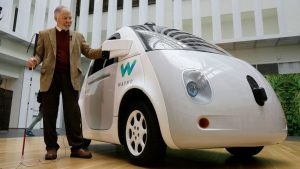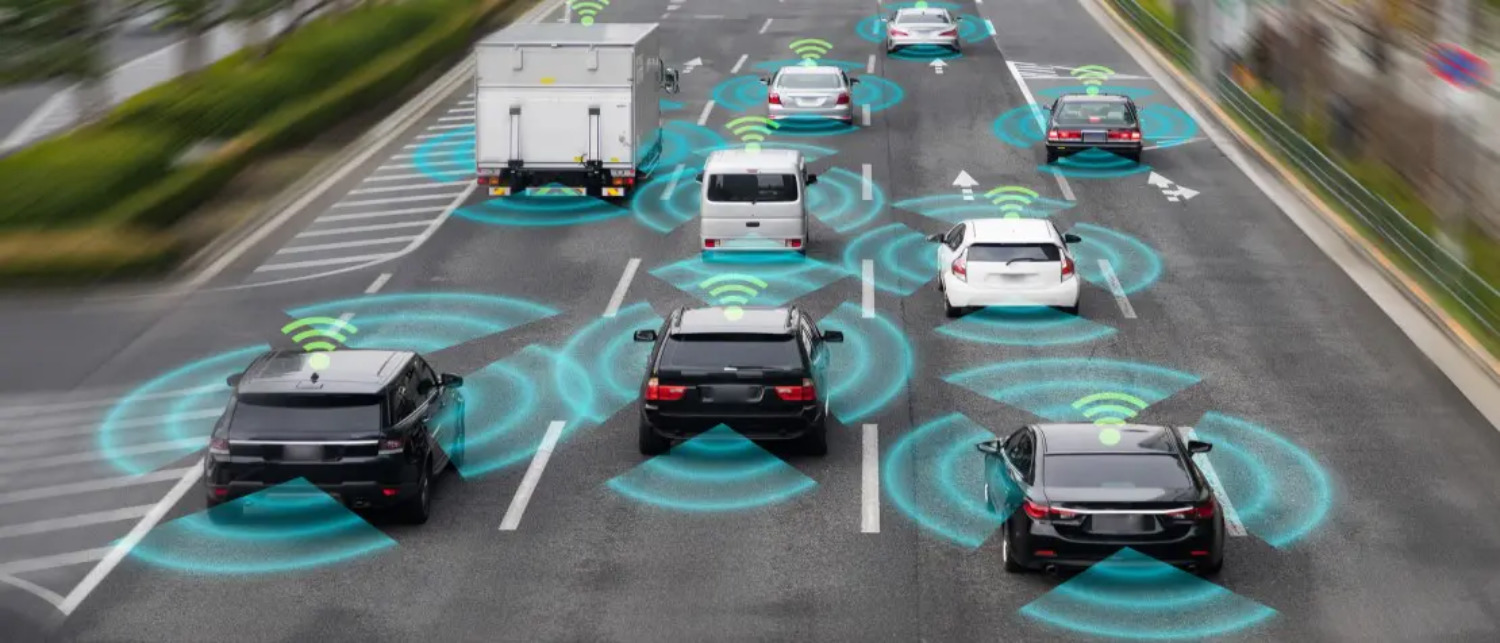Transportation is one of the critical sectors in artificial intelligence currently receiving the most interest.
Artificial intelligence is now used in the automotive sector for essential operations like traffic control, self-driving vehicles, and other areas where dependability and safety are essential to new technologies.
While firms like Uber experiment with the idea of self-driving vehicles to convey people to their destination instead of drivers, companies like Tesla have created a Self-Driving semi-truck.
A wide range of activities and experiences in the travel and transportation industry have the potential to be transformed by AI-powered technologies.
Read Also: The ethics of using Artificial Intelligence (AI) in decision making
The Evolution of AI on Transportation
Here are some evolution of AI in transportation:
Self-Driving Cars
Autonomous or self-driving cars are no longer just a storyline for science fiction books and films.
Companies are experimenting with autonomous and semi-autonomous vehicles more and more, which could improve transportation for many people and make roads safer.
As a result, opportunities abound, even though many consumers still need to be convinced about what the future of driverless vehicles might bring.
Some self-driving cab businesses assert that having access to this technology will also make traveling more affordable.
By proactively defending drivers and pedestrians even when a driver is too sluggish to react himself, autonomous cars have the potential to make everyone on the road safer.
For example, when a self-driving car is adequately programmed, it can prevent a vehicle from drifting too far outside its lane while a driver is tired.
Even the entire voyage can be handled by autonomous vehicles, or they can help when necessary. Autonomous vehicles can be significant in logistics and automatically deliver passengers to their destinations.
US logistics is using autonomous vehicles to deliver goods globally. These self-driving cars may dramatically lower supply chain expenses and maintenance requirements.
Enhanced Traffic Management
AI can make roads safer by reducing reliance on drivers to make judgments while driving. However, there are alternative possibilities.
Daily, for example, people experience traffic congestion and obstructed roadways. AI could be one of the tools that help to overcome this problem.
Huge volumes of traffic data can be collected by cameras and sensors installed on the road.
Then, the collected traffic data can be uploaded to the cloud and analyzed using algorithms that provide insights via applications and systems encouraging people to alleviate congestion difficulties.
Comprehensive data processing can yield traffic predictions, and commuters know more about what’s happening on the roads around them.
The modern world already shows signs of enhanced traffic management with GPS and navigation devices that can readily send alerts when traffic levels are high in particular areas.
Not only will these tools benefit autos, but also traffic in other vehicle situations. For example, AI-enhanced tools and applications can direct boats, ships, and airplanes to minimize excessive congestion.
This might result in significant financial savings for the transportation industry, as studies reveal that managing aircraft delays costs an estimated $39 billion annually, only in the US.
Driverless Buses
With demonstrations of autonomous buses and similar technologies now surfacing throughout Europe, AI is already set to revolutionize public transportation.
More people can travel quickly to their destinations thanks to these driverless technologies. The appropriate cars may also avoid traffic when combined with functional AI capabilities.
For example, businesses are testing self-flying drone taxis and planes that can take passengers to their destinations at the touch of a button.
In China, where travelers have already had a chance to experience intelligent air mobility, ideas have already started to surface.
By offering more real-time assistance and guidance to pilots, AI has the potential to enhance how airlines and pilots work.
Accidents and common air quality issues risk can be considerably decreased in this way. Additionally, it might make hiring additional co-pilots less expensive.
Numerous Additional Possibilities
Due to AI’s adaptability in the transportation sector, numerous additional industries may be impacted.
Dubai has been experimenting with intelligent license plates for vehicles with access to equipment that can provide emergency personnel with information about a collision or other event.
These plates can also be linked to your account to pay parking charges.
AI solutions have the potential to be the pioneering of crewless cargo ships, decreasing the demand on humans for physically demanding professions that might generally require months or years away from home.
Some pros may even employ artificial intelligence (AI) and Internet of Things links to control vehicles remotely.
The future of AI transportation could involve space flight and travel to other planets.
As a result, companies like Tesla have been spending more extensively on projects incorporating artificial intelligence into the space environment.
Now let’s take a look at self-driving cars and what it entails
Self-Driving Cars and AI
AI technologies are the core of self-driving automobile systems. A car must be able to navigate without human intervention to a specific destination over terrain for it to be fully autonomous.
To create autonomous driving systems, self-driving car developers combine massive volumes of data from image recognition systems with machine learning and neural networks.
Corporations developing and testing autonomous cars include:
- Volvo
- Audi
- BMW
- Ford
- Tesla
- General Motors
- Volkswagen
Patterns in the data are identified by neural networks and supplied to machine learning algorithms.
For example, images from cameras on self-driving cars are among the data sources from which the neural network learns to recognize traffic signals, trees, curbs, pedestrians, street signs, and other elements of any particular driving environment.
To explain this, we’ll consider Google Waymo.
Read Also:
The Google Waymo project
Google’s self-driving car project, Waymo, employs a combination of sensors, lidar (light detection and ranging — a technology akin to RADAR), and cameras to recognize everything around the vehicle and forecast what those objects may do next.

The system can use more profound learning algorithms to make more sophisticated driving decisions as it accumulates more driving data.
The following describes how Google Waymo vehicles operate:
- A destination is chosen by the driver (or passenger)
- The car’s software calculates the route.
- A revolving, roof-mounted Lidar sensor scans a 60-meter radius around the car and generates a live three-dimensional (3D) map of the vehicle’s current surroundings.
- A sensor on the left rear wheel detects sideways movement to determine the car’s position on the 3D map.
- Radar devices in the front and rear fenders calculate obstacle distances.
- The car’s AI software is linked to all the sensors and collects data from Google Street View and video cameras inside the vehicle.
- The AI uses deep learning to model human perceptual and decision-making processes and regulates actions in driver control systems such as steering and brakes.
- The car’s software checks Google Maps to anticipate landmarks, traffic signs, and lights.
Autonomy Levels in Self-Driving Cars
The National Highway Traffic Safety Administration (NHTSA) in the United States defines six levels of automation.
It begins with Level 0, where people drive and progress through driver assistance technology to completely autonomous vehicles. The five stages that follow Level 0 automation are as follows:
● Level 1: An advanced driving assistance system (ADAS) assists the human driver with steering, stopping, and accelerating, but not all simultaneously.
An ADAS system incorporates rearview cameras and features such as a vibrating seat warning to inform drivers when they leave their travel lane.
● Level 2: An ADAS that can steer, brake, or accelerate while the driver remains fully conscious and acts as the driver.
● Level 3: An autonomous driving system (ADS) can conduct all driving responsibilities under specific conditions, such as parking. In these cases, the human driver must be prepared to reclaim control and remain the vehicle’s primary driver.
● Level 4: An ADS is capable of performing all driving activities. In certain circumstances, an ADS can conduct all driving functions and monitor the driving environment at Level 4.
In some cases, the ADS is dependable enough that the human driver is not required to pay attention.
● Level 5: The vehicle’s ADS works as a virtual chauffeur, driving the vehicle under all scenarios. The human occupants are passengers and are never expected to drive the vehicle.
For example, Google’s Waymo collaborated with Lyft to launch Waymo One, a completely autonomous commercial ride-sharing service.
Riders can request a self-driving car to take them to their location while providing input to Waymo. If the ADS needs to be overridden, the cars still include a safety driver.
As of late 2022, the service is only offered in the Metro Phoenix area, San Francisco, and, most recently, Los Angeles, but it plans to expand to additional locations.
Manufacturers’ projections for when Level 4 and 5 vehicles will be generally available vary. A Level 5 vehicle must be able to react to novel driving circumstances or better than a person.
Read Also: How AI Can Help Us Fight Climate Change
The Effects of Self-Driving Cars
Safety
The primary advantage highlighted by proponents of self-driving cars is safety.
According to a United States Department of Transportation and National Highway Traffic Safety Administration statistical prediction of traffic fatalities for 2017, 37,150 persons died in motor vehicle traffic incidents that year.
NHTSA also reports that human error or poor decisions, such as drunk or distracted driving, cause 94% of serious crashes.
Autonomous vehicles eliminate such risk factors from the equation; nonetheless, self-driving cars are still subject to other reasons that cause failure, such as mechanical faults.
The economic benefits of driverless automobiles could be tremendous if they drastically reduce the number of crashes.
According to the NHTSA, injuries have an economic impact of $57.6 billion in missed business productivity and $594 billion in loss of life and impaired quality of life.
Productivity
The occupants of fully automated vehicles could perform productive tasks while going to work.
People who cannot drive owing to physical constraints may gain new independence through autonomous vehicles and be able to work in industries that require driving.
Autonomous trucks have been tested in the United States and Europe, allowing drivers to utilize autopilot over long distances, allowing the driver to rest or do duties while enhancing driver safety and fuel efficiency.
Irritability
One disadvantage of self-driving technology is that traveling without a person behind the wheel may initially be unsettling.
However, as self-driving capabilities grow more popular, human drivers may become overly reliant on autopilot technology.
This leaves their safety in the hands of automation, even when they should be acting as backup drivers in the event of software faults or mechanical issues.
Autonomous vehicles must learn to recognize a wide range of items in their route, from branches and garbage to animals and people.
Development Difficulty
The systems must make rapid decisions on when to slow down, swerve, or maintain regular acceleration.
This is an ongoing difficulty for developers, and there have been reports of self-driving cars pausing and swerving excessively when objects in or near the highways are identified.
This issue was highlighted in a deadly accident involving an Uber self-drive vehicle in March 2018.
According to the corporation, the vehicle’s algorithms detected a pedestrian but judged it a false positive and did not swerve to avoid hitting her.
Toyota has temporarily halted testing of self-driving cars on public roads because of this accident, although testing will continue elsewhere.
With crashes comes the issue of liability, and policymakers have yet to establish who is responsible when an autonomous vehicle is involved in an accident.
Car manufacturers are subject to Federal Motor Vehicle Safety criteria, and the NHTSA reported that more effort is needed to ensure that vehicles fulfill those criteria.
The Social Impact of Self-Driving Cars
The widespread use of self-driving automobiles promises several societal benefits.
One of the significant advantages is increased safety, as autonomous vehicles are predicted to reduce the frequency of accidents caused by human mistakes substantially.
Tesla’s autopilot system, for example, has already proven its worth. For instance, Tesla’s autopilot technology has already shown that it can improve safety by offering options like autonomous emergency braking and accident avoidance.
In addition, self-driving vehicles can help improve mobility for the elderly and crippled, giving them a renewed sense of independence.
As more effective routing and vehicle coordination can minimize gridlock traffic and optimize fuel usage, the technology can potentially reduce traffic congestion and pollution.
Finally, self-driving vehicles give users time during travel, increasing productivity and general quality of life.
These mind-blowing innovations make us wonder what new trends are coming in the future. Several organizations have already begun to try new things.
Conclusion
Over the last century, transportation has seen tremendous changes. However, we are on the verge of a new mobility revolution in 2023.
The rapid development of autonomous vehicles (also known as self-driving cars) and the introduction of flying automobiles promises more accessible, efficient, and environmentally responsible ways of transportation in the future.

